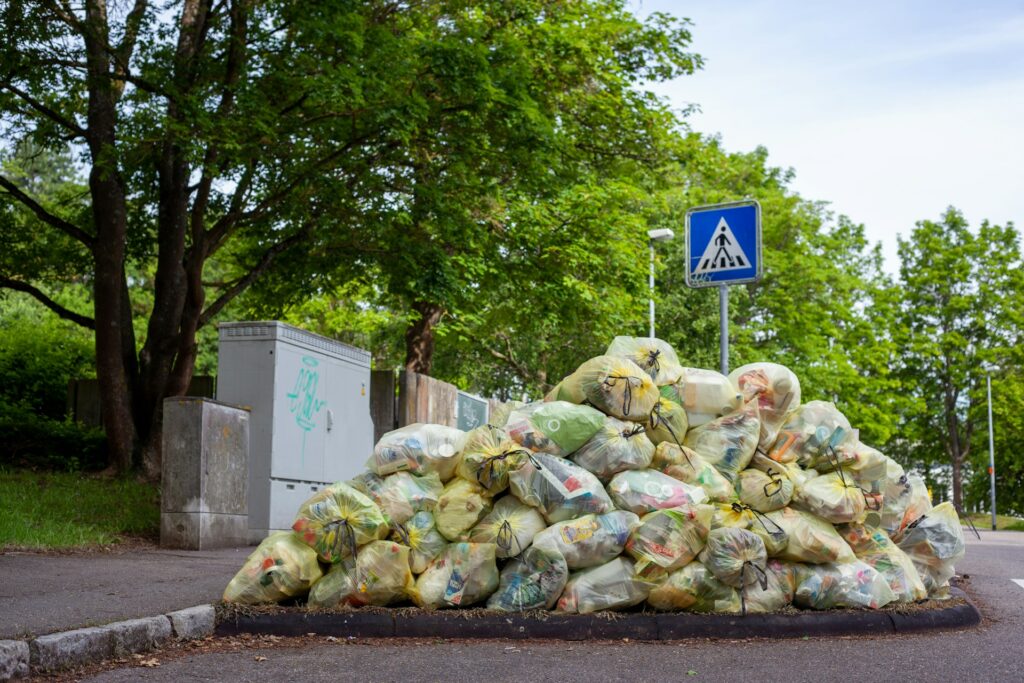Using Artificial Intelligence to Find Solutions to the Problem of Food Waste

Using Artificial Intelligence to Find Solutions to the Problem of Food Waste
A little less than one-third of all the food that is produced in the world is thrown away every year. Despite the fact that this is sufficient to feed more than two billion people, it instead ends up in landfills, where it contributes to the production of methane and further exacerbates global hunger and environmental problems. The fact that food is both squandered and vitally required at the same time is a conundrum that is absolutely mind-boggling.
There is more to this than simply a lack of good habits or ineffective logistics. It is a structural issue, and it is a problem that is very human. Nevertheless, artificial intelligence is emerging as a new force that is stepping in to handle the issue. Innovative firms all around the world are using artificial intelligence to monitor, forecast, and eventually cut down on the amount of food that is wasted at each and every stage of the supply chain.
Artificial intelligence is offering fresh hope to one of the world’s oldest and most aggravating challenges, which goes from the farm to the refrigerator.
The magnitude of the problem and the reasons why food waste occurs
It is not enough to just throw away any leftovers when it comes to food waste. It starts on fields when crops are not harvested, it continues in shops when food is not sold, and it concludes in households when expired things fill the garbage. Through this procedure, we not only throw away food, but we also throw away the water, energy, labor, and land that were used in the production of the food.
Even worse, the decomposition of food in landfills results in the emission of methane, which is a greenhouse gas that is far more powerful than carbon dioxide. Therefore, decreasing food waste is not simply an issue of saving money or feeding more people; it is also an effective approach to protect the environment from the effects of climate change. Consequently, new businesses are coming in to provide solutions that are driven by artificial intelligence and assist avoid waste before it occurs.
Not Speculating on Demand, but Predicting It
Inaccurate forecasting is one of the primary factors that contribute to the loss of food. Perishable commodities are stocked in excess by stores. The food at restaurants are overprepared. Farmers produce more than they are able to bring in. Manual tracking and outmoded trends were the system’s primary methods of operation for many years. AI tools are now causing a shift in the game. Startups are developing algorithms that properly forecast how much food will be required and when it will be required by evaluating real-time data. This data includes weather patterns, previous purchasing behavior, foot traffic, holidays, and even trends in social media.
This enables shops to stock the appropriate quantity of the product. The planting process may be improved. Kitchens are able to prepare food accurately. Furthermore, the chain as a whole wastes less while still being able to satisfy the demand. Startups such as Afresh, Wasteless, and Shelf Engine are at the forefront of this movement. These companies collaborate with grocery stores and retail establishments to dynamically optimize inventory and price. As a consequence, not only is there less waste, but there are also improved profit margins and customers get food that is fresher.
Intelligent expiration and tracking in real time
Another obstacle is the manner in which we keep track of food, or more correctly, the manner in which we do not. As a result of the fact that expiration dates are often unchanging and erroneous, individuals frequently throw away perfectly edible food. There is a significant volume of food that is thrown out at the commercial level merely due to the fact that it is not obvious how long it will remain fresh.
Enter freshness tracking that is driven by artificial intelligence. In order to identify the presence of rotting in food by assessing color, texture, or gas emissions, several firms are using computer vision and Internet of Things sensors to monitor the state of food in real time. Some people utilize machine learning to generate dynamic expiry dates, which alter the shelf life of the product depending on how it is kept or moved before it is consumed.
This not only helps customers avoid throwing away edible food, but it also enables grocery stores to cycle their stock in a more strategic manner, allowing them to donate food before it goes bad rather of throwing it out on the garbage.
Utilizing Accuracy in the Recovery of Excess Food
Every day, grocery stores, cafés, and restaurants find themselves in possession of an abundance of food. The conventional answer is to dispose of it. A new generation of entrepreneurs, however, is using artificial intelligence to link that excess with individuals who need it in a swift and effective manner.
Some examples of apps that assist companies in listing unsold food products at a discount are Too Good To Go, Olio, and Karma. These apps provide users with access to inexpensive meals while also minimizing the amount of food that is sent to landfills. Some go even farther by using artificial intelligence to forecast when and where surpluses will arise. This makes it possible to redistribute the surpluses more quickly to food banks, shelters, or even homes in the immediate vicinity. Utilizing these platforms, what was formerly considered garbage is transformed into an opportunity, and in the process, community relationships are fostered.
Newer and more advanced kitchens in both homes and restaurants
AI is also causing changes in the way that we utilize food in our kitchens. As a result of the proliferation of smart refrigerators and applications, home chefs now have the ability to monitor what is stored in their refrigerators, get recipe recommendations based on what is due to expire, and receive reminders to utilize perishable items. These systems will eventually learn your eating patterns and assist you in becoming a more savvy shopper.
The use of artificial intelligence applications in commercial kitchens assists cooks in managing inventories, monitoring servings, and reducing overproduction. The insights that these technologies give help kitchens become more efficient and less wasteful, without losing quality. These insights are provided by evaluating plate waste or components that are left over from previous meals. The combination of machine learning and menu planning is causing a revolution in the way that food service operations are carried out behind the scenes using this new technology.
The Future of Food Systems That Do Not Produce Waste
The fact that these breakthroughs have the potential to completely transform the food ecology is what makes them so highly anticipated. Using AI, we are not just cleaning up after the problem, but we are also preventing it from happening in the first place.
Imagine a society in which grocery stores never have an excessive amount of goods on hand, where households seldom throw out vegetables, and where any extra meals are automatically sent to those who are in need of them. There is no utopian ideal in it; rather, it is a possibility that is driven by evidence. Additionally, entrepreneurs are leading the charge with innovative and adaptable solutions since they are not encumbered by the sluggish pace of large enterprises.
There is a good chance that artificial intelligence solutions will be included into national food plans, local enterprises, and even family kitchens as more governments and corporations become aware of the significance of increasing food waste reduction.
The Technology That Has a Preference for Change
Eating brings us all together. And squandering it at a time when so many others are going hungry is one of the most obvious indications that our world is out of balance. With the help of artificial intelligence, however, we now have access to technologies that are capable of addressing this challenge from the bottom up in ways that are more intelligent, quicker, and more efficient than ever before. Not only are the firms that are using artificial intelligence to reduce food waste developing applications, but they are also altering how we produce, transport, sell, and consume food. In addition, by doing so, they are contributing to the creation of a future in which food is appreciated rather than squandered.
Because when technology is used for the benefit of society as a whole, everyone is given a chance to participate.





